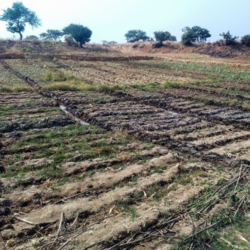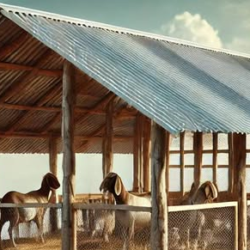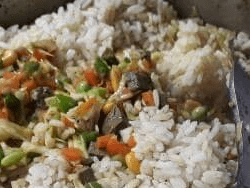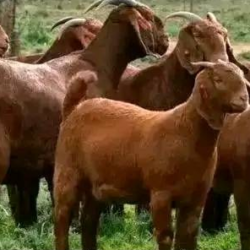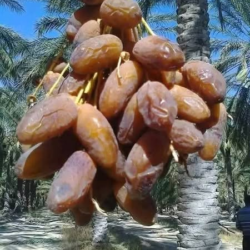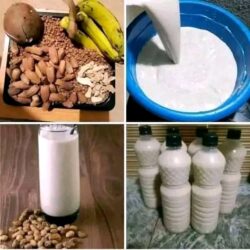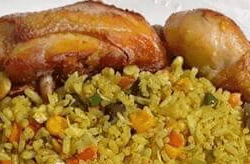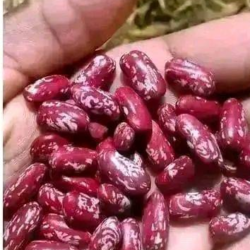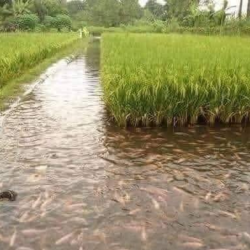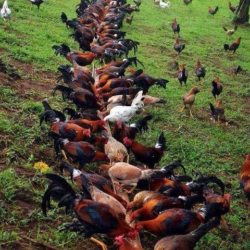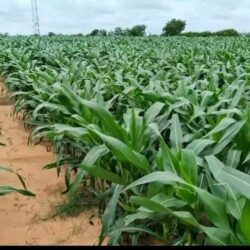Planting maize on a large scale requires careful planning, proper techniques, and timely execution to achieve high yields. Below is a comprehensive, step-by-step guide to planting maize:
1. Site Selection
- Sunlight: Choose a site that receives adequate sunlight throughout the day for optimal photosynthesis.
- Soil: Select well-drained soil to prevent waterlogging, as maize is sensitive to excess moisture.
- pH Level: Ensure the soil has a pH range of 6.0 to 7.5. Conduct a soil test to confirm suitability.
2. Land Preparation
- Clear Vegetation: Remove all weeds, grass, and other vegetation to reduce competition for nutrients.
- Tilling: Use a tractor or plow to prepare the land, creating a fine, loose seedbed for planting.
- Leveling: Level the field to ensure uniform water distribution during irrigation.
3. Seed Selection
- High-Quality Seeds: Procure certified seeds from reputable suppliers. Look for varieties that are disease-resistant and suitable for the local climate.
- Germination Test: Test seeds for germination rates to ensure at least 85% viability before planting.
- Seed Treatment: Treat seeds with fungicides or insecticides to protect against soil-borne diseases and pests.
4. Fertilization
- Soil Testing: Conduct a soil test to determine nutrient levels and deficiencies.
- NPK Fertilizer: Apply a balanced fertilizer containing Nitrogen (N), Phosphorus (P), and Potassium (K) based on soil test recommendations.
- Organic Matter: Incorporate well-decomposed manure or compost to improve soil structure and fertility.
5. Planting
- Timing: Plant maize when the soil temperature is at least 60°F (15.5°C) for optimal germination.
- Spacing:
- Row Spacing: Space rows 30-36 inches (75-90 cm) apart.
- Seed Spacing: Place seeds 8-10 inches (20-25 cm) apart within each row.
- Depth: Plant seeds at a depth of 1-2 inches (2.5-5 cm).
- Planting Tools: Use a mechanized planter for efficiency on large-scale farms or plant manually if resources are limited.
6. Irrigation
- Water Requirement: Maize requires consistent moisture, especially during critical stages like germination, flowering, and grain filling.
- Drought Mitigation: Use irrigation systems such as drip or sprinkler irrigation during dry spells to maintain soil moisture.
- Frequency: Irrigate at intervals based on soil conditions and rainfall patterns. Avoid overwatering to prevent root rot.
7. Weed Control
- Pre-Emergent Herbicide: Apply a herbicide before the maize germinates to suppress early weed growth.
- Manual Weeding: Hand-weed or use mechanized weeders to control weeds between rows if herbicides are not used.
- Timeliness: Control weeds early to reduce competition for resources like water, sunlight, and nutrients.
8. Pest Control
- Common Pests: Monitor for maize pests like corn borers, cutworms, and armyworms.
- Insecticides: Apply appropriate insecticides or use biological control methods such as releasing natural predators.
- Integrated Pest Management (IPM): Combine cultural, biological, and chemical controls for sustainable pest management.
9. Harvesting
- Maturity: Maize is ready for harvest when kernels are fully developed and reach a moisture content of approximately 25%.
- Harvesting Methods:
- Manual Harvesting: Suitable for small-scale operations or where labor is available.
- Combine Harvesters: Ideal for large-scale farms, ensuring faster and more efficient harvesting.
- Drying: Dry harvested maize to a moisture content of 13-14% for safe storage.
- Storage: Store maize in a cool, dry place, preferably in hermetic bags or silos, to prevent spoilage and pest infestation.
Key Tips for Success
- Planning: Begin preparations early to align planting with the rainy season or irrigation schedules.
- Monitoring: Regularly inspect the crop for signs of pests, diseases, or nutrient deficiencies.
- Record-Keeping: Maintain records of inputs, yields, and challenges to improve future planting cycles.
By following these steps, farmers can ensure the efficient production of maize on a large scale, maximizing yields and profitability.




